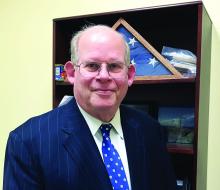Strong feelings – such as intense anxiety, irritability, or depressed mood – may affect every child for brief periods of time during their development. Parents and pediatricians are wise to not treat them as psychiatric disorders unless they persist for weeks, impair functioning, or are dramatically severe. Psychosis – marked by hallucinations, perceptual distortions, or profoundly disorganized thinking and behavior – typically looks dramatically severe. Even when psychotic symptoms are mild or brief, they can cause very serious distress for parents and clinicians. The worry is that they may represent a “first break,” a psychotic episode that requires much work for recovery, or the beginning of a lifelong struggle with schizophrenia or other chronic psychotic illness.
While it is important to recognize schizophrenia early – because early interventions are thought to improve the course of the disease – schizophrenia in childhood is rare. It is not commonly recognized that psychotic or psychoticlike symptoms are much more common than schizophrenia. While it is important to begin a thoughtful evaluation when a child or teenager presents with psychosis, it also is important to know that the majority of young people who experience psychotic symptoms do not have schizophrenia or other psychotic illness.
Psychosis describes symptoms in which there has been some “break with reality,” often in the form of hallucinations (seeing or hearing things which are not objectively present) or of distorted perceptions (such as paranoia or grandiosity). “Subsyndromal psychotic symptoms” occur when a person experiences these perceptual disturbances but has doubt about whether or not they are real. In frank psychosis, patients have a “fixed and firm” belief in the truth or accuracy of their perceptions, no matter the evidence against them. The voices they hear or hallucinations they see are “real” and there is a wholehearted belief that what the voice says or what they are seeing is as true as what you or I see and hear.
Schizophrenia is a diagnosis that requires the presence of both these “positive” psychotic symptoms and “negative” symptoms of flat affect; loss of motivation, social, or motor abilities; and cognitive impairment. These symptoms typically emerge in late adolescence (median age, 18 years) in males and early adulthood (median age, 25 years) in females, with another (smaller) peak in incidence in middle age. Importantly, the negative symptoms often emerge first so there often is a history of subtle cognitive decline and social withdrawal, one of the most common patterns in children, before psychosis emerges. Schizophrenia is quite rare, with a prevalence of slightly under 1% of the global population, an annual incidence of approximately 15 people per 100,000, and 1 in 40,000 in children under 13 years old, according to the National Institute of Mental Health. Psychotic symptoms are much more common than schizophrenia, affecting approximately 5% of the adult population at any point in time. They are even more common in children and adolescents. A meta-analysis of population-based studies of psychotic symptoms in youth demonstrated a median prevalence of 17% in children aged 9-12 years and 7.5% in adolescents aged 13-18 years.1 Of course, as with all statistics, much depends on the definitions used to identify this high prevalence rate.
Children and adolescents who report psychotic symptoms are at increased risk for developing schizophrenia, compared with the general population, but most youth with psychotic symptoms will not go on to develop schizophrenia. They are more likely to indicate other, nonpsychotic psychiatric illnesses, such as anxiety or mood disorders, including depression, obsessive compulsive disorder (OCD), and PTSD. In younger children, these symptoms may prove to be benign, but in adolescents they usually indicate the presence of a psychiatric illness. In one study, 57% of children aged 11-13 years with psychotic symptoms were found to have a nonpsychotic psychiatric illness, but the rate jumped to 80% for those aged 13-15 years with psychotic symptoms.2 So while psychosis in teenagers only rarely indicates schizophrenia, these symptoms usually indicate the presence of a psychiatric illness, and a psychiatric evaluation should be initiated.
If a child in your practice presents with psychotic symptoms, it is appropriate to assess their safety and then start a medical work-up. Find out from your patient or their parents if their behavior has been affected by their perceptual disturbances. Are they frightened and avoiding school? Are they withdrawing from social relationships? Is their sleep disrupted? Have they been more impulsive or unpredictable? If their behavior has been affected, you should refer to a child psychiatrist to perform a full diagnostic evaluation and help with management of these symptoms.
Your medical work-up should include a drug screen, blood count, metabolic panel, and thyroid function test. Medications, particularly stimulants, steroids, and anticholinergics can cause psychotic symptoms in high doses or vulnerable patients (such as those with a developmental disorder or traumatic brain injury). If the physical or neurologic exam are suggestive, further investigation of the many potential medical sources of psychotic symptoms in youth can be pursued to rule out autoimmune illnesses, endocrine disorders, metabolic illnesses, heavy metal poisoning, neurologic diseases, infectious diseases, and nutritional deficits. It is worth noting that childhood sleep disorders also can present with psychosis. Persistent psychotic symptoms in children are very hard to evaluate and may be the harbinger of a serious psychiatric disorder, so even if the medical work-up is negative and the persistent symptoms are mild and not causing a safety concern, a referral to a child psychiatrist for a full mental health evaluation is appropriate.
Psychotic symptoms in an adolescent sometimes are easier to assess, more worrisome for serious mental illness, and are a high-risk category for self-destructive behavior and substance use. Before you begin a medical work-up, you always should assess for safety, including suicide risk, if your adolescent patient presents with psychotic symptoms. Screening for symptoms of mood, anxiety, and substance use disorders also can help reveal the nature of their presenting problem. If your adolescent patient is using drugs, that does not rule out the possibility of an underlying mood, anxiety, or thought disorder. While intoxication with many drugs may precipitate psychotic symptoms (including stimulants, hallucinogens, and marijuana), others may precipitate psychosis in withdrawal states (alcohol, benzodiazepines, and other CNS depressants). It also is important to note that adolescents with emerging schizophrenia have very high rates of comorbid substance abuse (as high as 60%), so their drug use may not be the cause of their psychotic symptoms. There also is emerging evidence that use of certain drugs during sensitive developmental periods can significantly increase the likelihood of developing schizophrenia in vulnerable populations, such as with regular marijuana use in adolescents who have a family history of schizophrenia.
For those rare pediatric patients who present with both negative and positive symptoms of emerging schizophrenia, early diagnosis and treatment has shown promise in improving the course of the disease. Cognitive-behavioral therapy (CBT) for psychosis has shown promise in lowering the rates of conversion to schizophrenia in select patient populations. This therapy teaches strategies for improving reality testing, cognitive flexibility, and social skills. The social skills appear to be especially important for improving adaptive function, even in those patients who progress to schizophrenia. Family therapies, focused on improving family cohesion, communication, and adaptive functioning, appear to improve family well-being and the course of the patient’s illness (such as fewer and less severe psychotic episodes and improved mood and adaptive function). Early use of antipsychotic medications also appears to improve the course of the illness.
While schizophrenia is not curable, early detection (perhaps by a pediatrician), referral, and treatment can be powerfully protective for patients and their families.
Dr. Swick is physician in chief at Ohana, Center for Child and Adolescent Behavioral Health, Community Hospital of the Monterey (Calif.) Peninsula. Dr. Jellinek is professor emeritus of psychiatry and pediatrics, Harvard Medical School, Boston. Email them at pdnews@mdedge.com.




